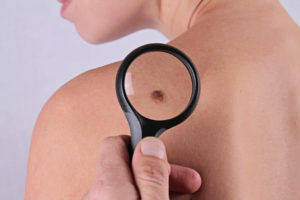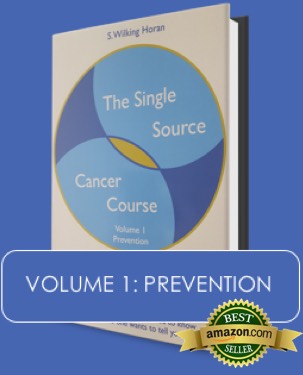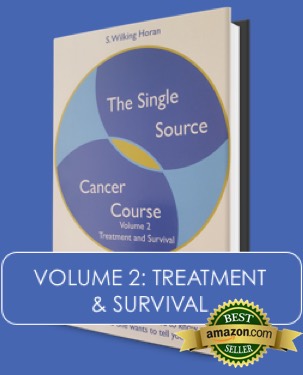 THE BEAUTY AND NECESSITY OF A FULL BODY CHECK
THE BEAUTY AND NECESSITY OF A FULL BODY CHECK
With apologies to The Bard, William Shakespeare, I’m happy to welcome you back. It’s time for another #Wellness Wednesday and today we’re going to discuss the most common cancer in the world – Skin Cancer. More specifically, we’re going to discuss the most important procedure you can undergo to prevent this disease or at least, to catch it in its earliest stage. And this, of course, is the Full Body Check.
As many of you know, I have a history of skin cancer. And, I have a history of breast cancer. So, this is a double whammy for me because one who has had one skin cancer is more likely to develop another. And, women who have had breast cancer also have a greater risk for developing melanoma. As a result, the Full Body Check is one test I take very seriously. In fact, because of my increased risk, I have it twice a year instead of the typically recommended schedule of once a year.
Now, there are three basic types of skin cancer which include basel cell cancer, squamous cell cancer and melanoma. The former is the least dangerous and the latter is the most dangerous. But, most skin cancers begin as obvious anomalies on our skin. The good news about this is that many potentially dangerous skin cancers can be spotted by the individual her or himself.
But, here’s the thing. We can’t personally inspect our entire body. Most of us can’t see every inch of our scalp or back or inside our ears. Not only that, but skin cancer can develop anywhere on the skin – even in places where the sun has never shined. This is why we all need a professional to give us the once over at least once a year. And, this is what you should expect when you do so.
First, realize that during your Full Body Check your full body will be checked 🙂 Accordingly, pick a dermatologist with whom you’re comfortable. If you’re a female, you might be more comfortable with a female doctor. If you’re a male, you may want a male doctor.
Once in the examination room, you may be asked to remove all your clothes and put on a gown. If you’re not really comfortable with this, it’s usually fine to leave your skivvies on and then remove each piece at the appropriate time for inspection. But remember, this exam is all in a day’s work for these professionals. They have performed these body checks hundreds, if not thousands, of times. And, one naked rear end is just like any other. So, don’t let unnecessary embarrassment or anxiety get in the way of a potentially life-saving procedure.
A procedure, by the way, that includes an examination of every inch of your body from the top of your head to the soles of your feet. The inside of your mouth. The base of every hair follicle. On your cheeks and between your cheeks. Your torso, back, arms, legs, chest and groin. Every digit on your hands and feet – and every nail on your fingers and toes. For many individuals, this exam may only take about twenty minutes. But, for those of us who share a greater risk for skin cancer, the exam may be longer.
Now, I had my six-month Body Check just last week. And, during the visit my wonderful Derm, Dr. Judy, noticed a “spot” on the top of my head hidden under my hair. After a quick examination, it appeared to be a keloid, which is harmless scar tissue that sometimes develops over time. But, because keloids have a tendency to keep growing, Dr. Judy “froze” the spot with a blast of liquid nitrogen. This stops the tissue from growing until it forms a scab and eventually falls off. Painless and simple.
Then she noticed a “spot” high under my left breast – in a place that has rarely seen the light of day. Now, I have three flat dark moles in that area. And I’ve had them, well, forever. But, moles are specific tissues that can change over time and become cancerous. As a result, they must be monitored regularly.
In my case, the smallest of the three seemed the same to the naked eye. But, when Dr. Judy put on her “special” glasses, she noticed the edge of this mole appeared to have changed color. And, any change in a mole needs immediate attention.
Accordingly, right there in the exam room I received a local anesthetic – a few quick pricks with a small needle – and then Dr. Judy used her “special” razor blade and scraped the edge of the mole to send to the lab for a biopsy. A very painless procedure. We put some ointment on the spot and covered it with a band aid. Now, I wait a week or so for the results. If it isn’t cancer, great! But, even if it is cancer we’ve caught it early so it can be removed and treated with complete success. And, that’s the key. Cancer at this point will just involve a simple office visit, another local anesthetic, a slightly deeper cut, a few stitches to close the wound and continued observation. For, while we may not be able to prevent every cancer, we do have the means to insure early detection. And, this is the beauty of a Full Body Check!
Since moles are particularly suspect when it comes to skin cancer, let’s end this discussion with a few Take-Away Tips that you can use at home. Called the ABCD and Es of Moles, this is what you want to look for when examining a mole on your body:
A. ASYMMETRY – One half looks different from the other half.
B. BORDER – An irregular border, poorly defined.
C. COLOR – A variation in color from one part of the mole to another.
D. DIAMETER – Melanomas typically are 6 millimeters or greater, but smaller moles must be monitored as well.
E. EVOLVING – Moles or lesions that change over time and look different from the rest.
Remember, all human skin is susceptible to cancer. It doesn’t matter what color your skin is. And, cancer can develop anywhere we have skin whether the area has been exposed to the damaging rays of the sun or not.
So, if you notice a new lump or bump that doesn’t go away, see your dermatologist. If you have a lesion or wound that doesn’t heal, see your dermatologist. If you have a “spot” that appears flaky or rough or red, see your dermatologist. If you have an area of skin that constantly itches, see your dermatologist. And, if you have a mole that changes in appearance, see your dermatologist. And, even if you don’t notice any of these things, make sure you see your dermatologist once a year anyway! That Full Body Check just may save your life 🙂
Thanks again for joining me everyone. I hope you find this helpful in some small way. Until next time stay in GOOD HEALTH and . . .
TAKE THE COURSE AND TAKE CHARGE!
Time for Review:
The Single Source Cancer Course, Volume 1, Part 3: Up Close and Personal, Chapter 20 “Skin Cancer.” The Single Source Cancer Course, Volume 1, Part 5: Screening and Detection, Chapter 29 “Skin Cancer.”



Leave a Comment